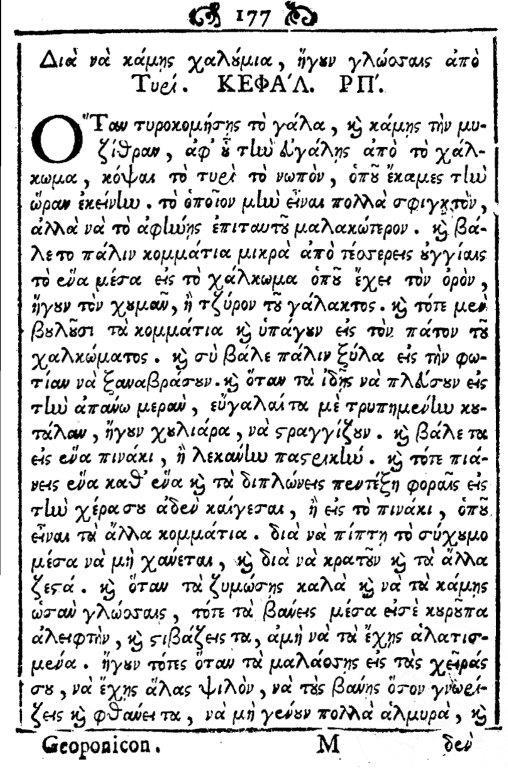The Dairy Culture of Cyprus | Charalambides Christis
June 14, 2021

From the New York Metropolitan Museum of Art to Michael Kasialos
The Dairy Culture of Cyprus along with the strategic collaboration of Charalambides Christis
The dairy products of Cyprus and especially the halloumi cheese, are considered the type of food that defines our identity as people, they have their own hidden history, which has marked the history of the country throughout the centuries.
The Cyprus Food and Nutrition Museum announces the release of the publication: "The Dairy Culture of Cyprus: History-Traditions-Folklore". This volume is co-published with the help of Charalambides Christis company.
The following are presented in the 6 chapters of the book:
-
The methods that contributed to discovering the milk and its derivatives with special reference to prehistoric Cyprus
-
The aspects of traditional rural life: the daily life, the occupations, the costumes, and the musical instruments of the shepherds
-
Related folklore: proverbs, folk phrases, prejudices and superstitions, Christian holiday customs, myths, fairy tales, traditions, folk remedies
-
The Cypriot practical manuscript sources related to the Orthodox Church
-
The revised version of the application has been approved by the National Commission UNESCO for the registration of Cypriot dairy products as part of the intangible cultural heritage of Cyprus. A detailed reference is made to the history, the manufacturing process, and the quality characteristics of all the Cypriot dairy products (halloumi, anari, flauna cheese, yoghurt, trachanas, halitzia, akathkiotikon cheese, milk butter, halloumi butter, anari butter, kefalotyri, tyropoulles).
Through the 252 pages of the volume, a panoramic view of the most essential dimension of the dairy culture of our country is captured; its penetration, through the centuries, in almost every aspect of the people’s life: in the stations of life, in religious festivals, in the cycle of time, in artistic and literary creation. Therefore, the Cypriot identity of these products is documented, with roots originating from ancient Greek Cyprus.
The texts are enriched with rich photographic material of more than 100 photographs of high quality. Archaeological findings from prehistoric and ancient times are depicted, such as Byzantine frescoes (from the 15th century) and portable Byzantine icons, ecclesiastical documents and other manuscripts from the 14th, 16th and 17th centuries, texts from an old 16th-century sightseeing book, visual arts, utensils from the 19th century. Also, rich photographic material is included, depicting all kinds of dairy products as well as their traditional way of being made and representing pastoral life.
It is worth noting that the oldest written reference to Cypriot cheese dates back to ancient times and is found in the Lucian century (2nd century AD), giving the impression that it is a famous local product.
ὦ μακαρία ἐκείνη, ἥτις ἐραστὴν σέ, ὦ Δωρίων, ἕξει: κρόμμυα γὰρ αὐτῇ οἴσεις ἐκ Κύπρου καὶ τυρόν, ὅταν ἐκ Γυθίου καταπλέῃς (14.4)
Among the many things mentioned in the book, the following are specifically noted regarding halloumi cheese:
-
The oldest written recipe for making halloumi dates back to the 17th century and is written in Greek.
-
The Venetian document, with the oldest written reference to the halloumi, dates back to 1558, i.e. 13 years before the occupation of Cyprus by the Turks.
-
In a travel journal published in 1656 and based on a trip made in 1596, states that the extremely white and extremely salty types of cheese that exist in Cyprus are not produced outside Cyprus.
-
Two written sources, in the Greek language of the 17th century that refer to halloumi as "tongues made from cheese”.
-
The words pydkia, noros, trochalla, piximon tou galaktos (milk coagulation), talarka, which refer to the means and process of producing halloumi, are words with ancient Greek roots, which are preserved and have almost remained unchanged in the traditional Cypriot dairy industry.
The preface of the current edition is a happy occasion according to four Ministers: the Minister of Agriculture, Rural Development and Environment, the Minister of Energy, Commerce and Industry, the Minister of Foreign Affairs and the Minister of Education, culture, Sports and Youth. We deeply appreciate and thank you, the four Ministries and especially the Ministers themselves, for their practical support. This fact demonstrates the recognition of the value of this collective volume and demonstrates the importance attributed, at the government level, for supporting and promoting the production sector as well as the dairy products. At the same time, the official government becomes a participant in paying tribute to the people of Cyprus, who preserved and passed on this special knowledge. We also warmly thank the National Commission of UNESCO and its President, Dr Lucia Hadjigabriel, for her own greeting.
It is expected that on the one hand, this edition will be used for the promotion and registration of Cypriot dairy products, especially that of halloumi cheese, given that at the same time it coincides with its approval as a ΠΟΠ product, while on the other hand for the promotion of Cyprus. Special thanks to Mr Alexis Charalambides, Chairman of the BoD. of the Charalambides Christis Company, both for the preface of the publication and his personal, decisive participation in our vision and work. This luxury edition could not have been achieved without the strategic cooperation of the Charalambides Christis Company. The Charalambides Christis company has practically shown its support in the preservation and promotion of the dairy culture of Cyprus and with its energy, this has had a positive impact on the people of Cyprus, who support it, as a legacy for future generations, its intangible cultural heritage, which is part of its historical identity, part of our country.
The five main authors are researchers and academics, while the books were edited by academics Maria Pavlou (Greek edition) and Lisa Suhair Majaj (for the English edition).








For More Information:
Dr Chrystalleni Lazarou
President BoD, Cyprus Food and Nutrition Museum
Mobile phone numbers: 99059820, 99295150

